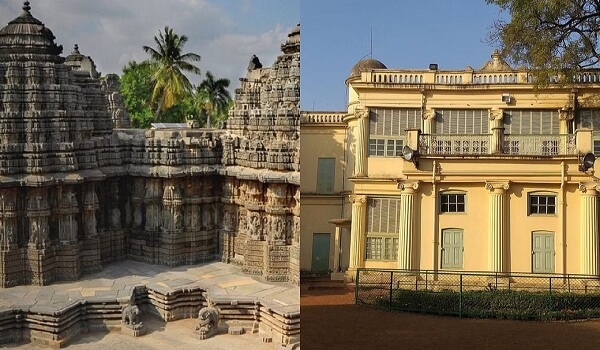Santiniketan, located in West Bengal, India, has achieved the prestigious status of being recognized as a UNESCO World Heritage Site.The efforts to have Santiniketan recognized as a UNESCO World Heritage Site have been ongoing since 2010. Santiniketan has been recognized by UNESCO as India’s 41st World Heritage Site.
Santiniketan Well Known
- Historical Significance: In 1862, Rabindranath Tagore’s father, Debendranath Tagore, spotted this scenic landscape and decided to establish an ashram, building a house called Santiniketan, meaning “abode of peace”.
- Name Change: The area, originally called Bhubadanga, was renamed Santiniketan by Debendranath Tagore due to its conducive environment for meditation.
- Educational Legacy: In 1901, Rabindranath Tagore chose a significant portion of land and established a school based on the Brahmachary Ashram model. This school later evolved into Visva Bharati University.
- UNESCO World Heritage Site: The Ministry of Culture proposed Santiniketan for inclusion in the UNESCO World Heritage List, emphasising its importance in human values, architecture, arts, town planning, and landscape design.
- Archaeological Preservation: The Archaeological Survey of India (ASI) has been involved in the restoration of several structures in Santiniketan, preserving its historical and cultural heritage.
Rabindranath Tagore
- Rabindranath Tagore was born on May 7, 1861, in Calcutta, India, into a prominent Bengali family. He was the youngest of thirteen children.
- Tagore was a polymath and excelled in various fields. He was not only a poet but also a philosopher, musician, playwright, painter, educator, and social reformer.
- In 1913, Rabindranath Tagore became the first Asian to be awarded the Nobel Prize in Literature for his collection of poems titled “Gitanjali” (Song Offerings).
Knighthood
- Rabindranath Tagore was awarded with Knighthood for Services to Literature by King George V in 1915.
- Tagore renounced his title of Knighthood after the 1919 Jallianwala Bagh Massacre.
Composer of National Anthems
- He wrote the national anthems of two countries, “Jana Gana Mana” (the Indian national anthem) and “Amar Shonar Bangla” (the Bangladesh national anthem).
UNESCO’s World Heritage Sites
- A World Heritage Site is a place that is listed by UNESCO for its special cultural or physical significance.
- The list of World Heritage Sites is maintained by the international ‘World Heritage Programme’, administered by the UNESCO World Heritage Committee.
- This is embodied in an international treaty called the Convention concerning the Protection of the World Cultural and Natural Heritage, adopted by UNESCO in 1972.

